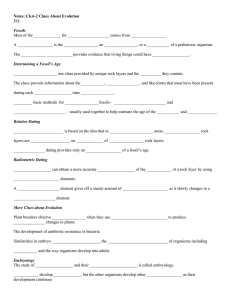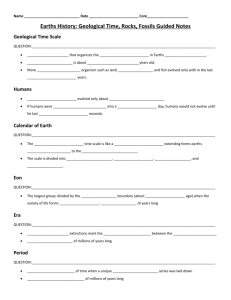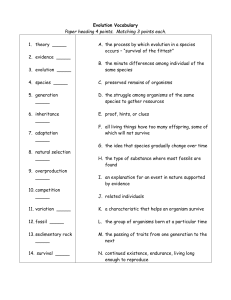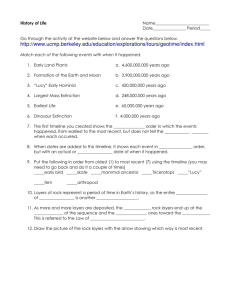Fossils and Organisms
advertisement
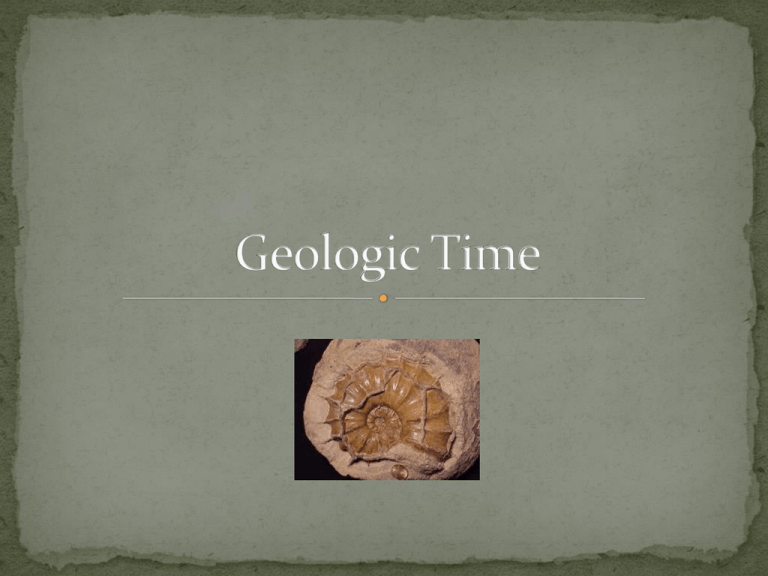
Most commonly found in Sedimentary Rock. As time passes, more layers are dropped on top of old layers. This means newer fossils on top old fossils. remnants or traces of organisms that are preserved in layers of rock. If an organism gets buried under sediment, the soft parts will decay, while the hard parts (bones, teeth, etc.) undergo a chemical change to become preserved in the sediment, which later becomes rock. provide a variety of information that scientists can use to learn about the organisms that once lived on Earth. the growth stages of an organism throughout its life cycle the microscopic features of an organism, such as cell structure the roles that organisms played within communities and food chains how organisms have changed over time the different types of organisms that lived at different times the appearance of the organism and its structures, including information about bone structure and organs Geologic eons, eras, periods, and epochs are each associated with changes among the organisms that lived on Earth. The types of organisms that were present in various periods of Earth's history can provide information about changes in the Earth's climate. Many organisms, for example, are known to survive within certain temperature ranges. If fossils of those organisms are plentiful, then scientists gain an important clue about the typical temperatures during that time period. Fossils of plants and animals in Antarctica, for example, show that a long time ago it had a warmer climate. provide information about how the Earth's surface has changed over time. If fossils of marine organisms are found in areas that are now dry land, scientists may assume that the area was once under water. This gives scientists important clues about land elevation, landforms, and sea level at various times in Earth's history. Fossils also show how the continents of the Earth have moved over time. The image above shows the approximate locations of the Earth's continents as they would have appeared 250 million years ago, prior to the rise of the dinosaurs. Age is relative to the age of something around it. Principle of Superposition – states the rock layer above is always younger. Rock layer under is always older. Does not apply when rocks are turned upside down or disrupted. The principle of original horizontality states that sediment is deposited in horizontal layers. Sedimentary rocks form as horizontal rock layers from this sediment. allows geologists to recognize when rock layers have been moved from their original positions. rock layers that slant at an angle, he or she knows that the layers have been tilted from their original, horizontal position. The principle of cross-cutting relationships states that a geologic feature is younger than the features it cuts across. For example, a fault that cuts across rock layers is younger than the rock layers. Absolute dating is a method in which the age of an object or event is estimated as an actual number of years. For example, a geologist might determine that a layer of volcanic ash is 20 million years old Radioactive dating, or radiometric dating, is a method in which the age of a rock, mineral, or fossil is calculated based on the amounts of certain radioactive substances in the sample compared to other substances in the sample. Radiocarbon dating is a type of radioactive dating that uses different types of carbon to measure the age of fossils or other materials. Radiocarbon dating relies on the fact that carbon-14 is radioactive and decays at a predictable rate.
